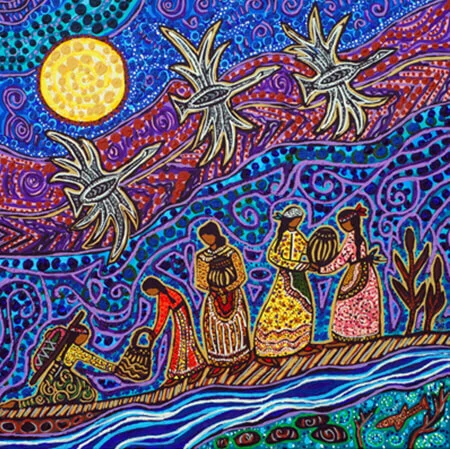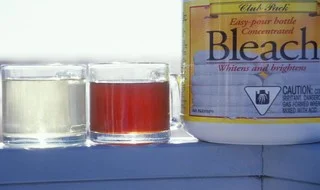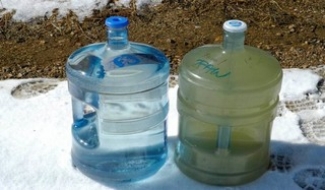The Purpose of Safe Drinking Water Team
Safe Drinking Water Team (SDWT) is a group of First Nations water treatment plant operators, scientific advisors, and other professionals who help other First Nations water treatment plant operators and rural water treatment plant operators with their water treatment challenges. SDWT also promotes the best available technology for water treatment and advocates for stricter guidelines and regulations for drinking water.
Get Free, Confidential Help With Your Community's Specific Drinking Water Quality Issues!
Send your raw water quality data and treated water quality data to safedrinkingwaterteam@gmail.com and SDWT will assess your community's water quality data and make suggestions for how to improve the quality of the treated water. This assistance is free of charge and your data and our communications will be held in strict confidentiality.
Active Drinking Water Advisories in Canada's Western Provinces
We have compiled a spreadsheet of all of the Drinking Water Advisories in place across Western Canada. We completed the last update of this spreadsheet on April 11, 2018. It is very interesting, so be sure to check it out!
We apologize for any errors or items which are outdated.
Saskatchewan, Alberta, and Manitoba Water Sample Test Results
We have compiled a spreadsheet of the Saskatchewan, Alberta, and Manitoba Water Sample Test Results for trihalomethanes, arsenic, free chlorine, total chlorine, iron, manganese, and total dissolved solids. We have highlighted all of the test result values which do not meet the Guidelines for Canadian Drinking Water Quality. It is very interesting, so be sure to check it out!
We apologize for any errors or items which are outdated.
The Indigenous Water Forum
Passing Water Forward
We were one of the hosts of the Indigenous Water Forum which took place October 27-28, 2016 at Dakota Dunes Casino. We addressed Strategies for Community Drinking Water with two streams running at the same time:
Stream 1: Drinking water treatment processes and policies, promotion of safe drinking water
*CEUs will be awarded*
Stream 2: Challenges, successes, priorities and directives for drinking water
For videos of presentations from the forum please visit https://www.youtube.com/channel/UClK0kRKXc-xwEejbWBMM75A.
Band Council Resolutions
Your community might want to consider signing a Band Council Resolution (BCR) to reject the downloading of responsibility for safe drinking water from the Federal government until such a time that the resources are in place to be able to produce sufficient safe drinking water for your community members on an ongoing basis.
The Framework for Safe Drinking Water
The Framework for Safe Drinking Water was completed in August 2011 and updated in October 2016.
In Canada, municipalities own and are responsible for drinking water treatment facilities and must supply the public with safe drinking water. This task is often more difficult in rural municipalities and First Nations communities. Smaller communities generally have less expertise, fewer resources, and typically only have access to poorer quality source water than that to which cities have access. Another problem is that most existing water treatment technologies are optimized for larger centres and may not work as well when scaled down. The Framework for Safe Drinking Water is meant to counter these challenges and streamline the daunting task of building new or updating older drinking water treatment facilities. By looking at it from both the legal and health perspectives we can help communities get the safest drinking water possible.
Please do not hesitate to contact us if you have any questions about the framework.
The Safe Drinking Water Team (SDWT) was formed by First Nation water operators, university scientists and water treatment professionals. Our goal is to educate native communities across the country about the production of safe drinking water. There are now treatment processes that can make safe drinking water from the poorest quality water source, whether groundwater or surface water. Water sources that Aboriginal Affairs deemed as "untreatable" have been made treatable with advanced technologies.
A major concern of the SDWT is the implementation of "marginal" technologies or "dead-end" technologies that cannot possibly treat drinking water properly. These marginal technologies may improve the water in order to meet the current Guidelines for Canadian Drinking Water Quality, but not by much. The Canadian Guidelines are constantly changing, with some guidelines set for political reasons; unfortunately, science is not always the basis for the guidelines. We encourage you to seek information on water treatment from numerous sources before getting stuck with a treatment system that may be obsolete the next time Health Canada changes its guidelines, or obsolete the day of commissioning.
This foam on Saddle Lake is Generated under windy conditions and is caused by the high level of natural organic material. It is a bit like whipping cream, but here we whip water.
A reverse osmosis membrane was used to split Saddle Lake water into a waste stream (left) and a pure water stream (right). Currently, as in conventional treatment systems, the two buckets are mixed and colour is frequently bleached out using chlorine just like when chlorine is added to tea.
Bleaching water has remained the mainstay of water treatment for more than 100 years, but its application to poor quality water sources does not solve all water quality problems and indeed generates some on its own.
The Yellow Quill well water looks like the bottle on the left, as it is coming out of the ground (100 m deep well). However, within minutes reduced iron is oxidized and small iron particles are formed generating 500 million particles per L (bottle to the right). The bottle to the left is actually biologically treated Yellow Quill water and it contains no iron and extremely low levels of particles. Biological treatment takes advantage of iron bacteria to oxidize iron preventing the formation of iron particles.







